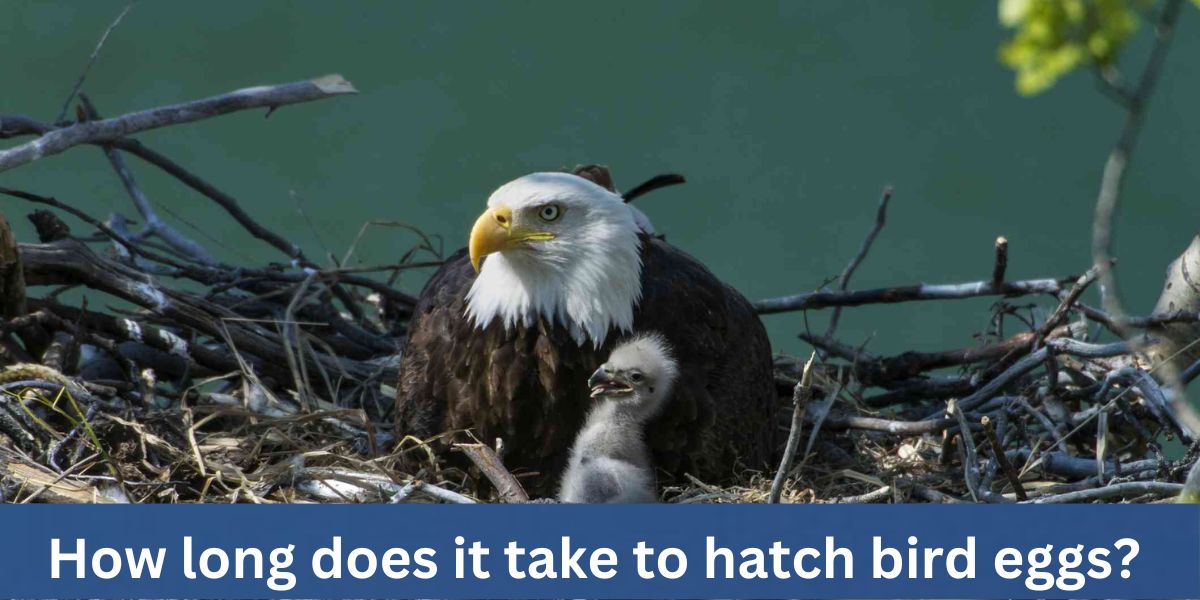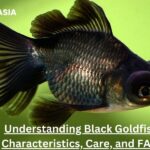Nearly all bird eggs should be incubated at a temperature between 99.5 and 100.0 degrees Fahrenheit (37.5 and 37.8 degrees Celsius). A little fluctuation within this range of temperatures is OK, but prolonged fluctuations of more than one degree can affect the hatch rate, result in birth abnormalities, or even stop eggs from hatching. There are a few outliers in this temperature range, including eggs from ostriches and emus. Ostrich eggs need 97.0 to 98.0 degrees F (36.1 – 36.6 C), while emu eggs need 95.5 to 96.5 degrees F (35.3 – 35.8 C).
Depending on the kind of bird, the incubation period for an egg might vary significantly. View the chart that follows. Please be aware that several variables, like incubation temperature, humidity level, egg-handling techniques, and genetics, can alter the duration specified below.
| Species | Incubation Period | Stop Turning Eggs |
| Large Fowl | 21 days | 19th day |
| Bantams | 21 days | 19th day |
| Games | 21 days | 19th day |
| Barbary | 23 days | 21st day |
| Chuckar | 23 days | 21st day |
| Hungarian | 23 days | 21st day |
| Congo | 26 days | 22nd day |
| Green | 28 days | 26th day |
| Guineas | 28 days | 26th day |
| India Blue | 27-29 days | 25th day |
| Bar-Tailed | 27-28 days | 25th day |
| Blood | 27-29 days | 25th day |
| Blue Eared | 26-28 days | 24th day |
| Brown Eared | 26-27 days | 24th day |
| Buff Ringneck | 24-25 days | 22nd day |
| Cheer | 26 days | 24th day |
| Copper | 25 days | 23rd day |
| Edwards | 22 days | 20th day |
| Elliot’s | 25 days | 23rd day |
| Fireback | 23-24 days | 21st day |
| Golden (Red) | 22 days | 20th day |
| Imperial | 25 days | 23rd day |
| Kalij | 24-25 days | 22nd day |
| Koklass | 26-27 days | 24th day |
| Lady Amherst | 22 days | 20th day |
| Melanistic | 24-25 days | 22nd day |
| Mikado | 27 days | 25th day |
| Reeve’s | 25 days | 23rd day |
| Ringneck | 24-25 days | 22nd day |
| Salvdori’s | 25 days | 23rd day |
| Silver | 25-26 days | 23rd day |
| Swinehoe | 25 days | 23rd day |
| Wattled | 24-26 days | 22nd day |
| White Eared | 24-25 days | 22nd day |
| White Mutant | 24-25 days | 22nd day |
| Yellow Golden | 22 days | 20th day |
| Benson | 22 days | 20th day |
| Blue Scaled | 23 days | 21st day |
| Bobwhite | 22-23 days | 20th day |
| Button | 16 days | 14th day |
| Cal Valley | 22-23 days | 20th day |
| Coturnix | 16-18 days | 14th day |
| Gambels | 22 days | 20th day |
| Mearns | 24-25 days | 23rd day |
| Mountain | 24-25 days | 23rd day |
| Black Spanish | 28 days | 26th day |
| Bourbon Red | 28 days | 26th day |
| BB Bronze | 28 days | 26th day |
| Giant White | 28 days | 26th day |
| Royal Palm | 28 days | 26th day |
| Wild | 28 days | 26th day |
| Canary | 14 days | 12th day |
| Dove | 14 days | 12th day |
| Finch | 14 days | 12th day |
| Mynah Birds | 14 days | 12th day |
| Parakeets | 18 days | 16th day |
| Parrots | 28 days | 26th day |
| Amazon | 28 days | 26th day |
| Macaw | 28 days | 26th day |
| Cockatoo | 28-29 days | 26th day |
| Blyth’s | 28-30 days | 26th day |
| Cabot’s | 28 days | 26th day |
| Satyr | 28 days | 26th day |
| Temminck’s | 28 days | 26th day |
| Western | 28 days | 26th day |
| Ducks | 28 days | 26th day |
| Muscovy | 35-37 days | 34th day |
| Geese | 28-30 days | 27th day |
| Swans | 30-37 days | 29th day |
| Rea | 35-40 days | 34th day |
| Ostrich | 42 days | 40th day |
| Emu | 50-56 days | 49th day |
| Ceylon | 20-21 days | 18th day |
| Green | 21 days | 19th day |
| Grey | 20-21 days | 18th day |
| Red | 19-21 days | 17th day |
| Monal | 28 days | 26th day |
| Crane | 30 days | 28th day |
| Crested Argus | 24-25 days | 23rd day |
| Great Argus | 24-25 days | 23rd day |
| Grouse/Prairie | 25 days | 23rd day |
| Himalayan | 28 days | 26th day |
| Pigeons | 17 days | 13th day |
How long does it take to hatch bird eggs?
In the world of birds, the wait for fresh life is everything but monotonous! For some small hummingbirds, it can take as little as 11 days for the chick to peck its way through its shell; for the large albatross, it can take up to 85 days. Smaller birds typically hatch sooner; songbirds typically do so in 12–15 days, whereas larger birds, such as ducks and eagles, might take up to 40 days. There are, however, always exceptions. For example, the emu, despite its size, takes only 50 days to hatch, while the tiny but resilient European wren does so in just 13 days. Thus, if you’re ever interested in learning how long it takes to reach chickdom, keep in mind that it all depends on the amazing bird you’re viewing!
How long does it take blue bird eggs to hatch?
Nestled comfortably in their hollow home, the lovely bluebird’s eggs hold on to their secrets for approximately 12 to 14 days. Depending on the species of bluebird (Eastern, Western, or Mountain), as well as the local climate, this incubation period may vary slightly. Birds in warmer southern regions may witness hatchlings one or two days ahead of their counterparts in colder climates. But one thing is certain—when the timer goes off, tiny, ravenous beaks will burst from the nest, ready for their next meal!
The process of hatching eggs

The time interval between the laying of an egg and its hatching is rather common. After a clutch of eggs is placed, incubation takes place. The goal and result of incubation are the same for all species, despite differences in duration and heat source.
Birds begin to emerge from their eggs when they are mature enough to have a reasonable chance of surviving.
The following are the main actions taken throughout the egg-hatching process:
Embryology After fertilised eggs are laid, they must be maintained at a specific temperature for a predetermined amount of days. While incubation times vary by species, most songbirds take 12 to 15 days on average, and larger birds like owls and kestrels require twice as long.
The incubating bird develops what is called a “brood patch,” a featherless, blood vessel-filled area on its abdomen that is designed to give eggs extra warmth in order to help with temperature regulation.
The latter phases of an embryo’s development
When an embryo’s development within an egg reaches completion, the physical act of hatching occurs. An anatomical feature known as a “egg tooth” develops during the unhatched embryo’s development; this pointed cap on the edge of a hatchling’s beak aids in the chick’s ability to break free of its egg, a process known as “pipping.” surfacing from the shell of an egg. A tiny crack or hole that forms in the eggshell as the embryonic chick starts to prick its way out from the inside is the first outward sign of hatching. By making circular pecks from within the shell, the bird finds its weakest place and causes a tiny crack to widen, revealing its head and then the rest of its body. In certain species, this phase can take more than 12 hours.
Cleaning the nest after hatching
To make a little more room for the developing chicks to live, the mother bird will often remove all of the eggshell fragments from the nest once the hatchlings have completely emerged from the eggs.
Can an egg from a bird hatch without its mother?
Emperor penguins, cassowaries, and emus are among the bird species whose fathers are the only ones who incubate the eggs.
Phalaropes, jacanas, and dotterels are examples of polyandrous species, in which females mate with many males. For these birds, only the male is responsible for incubating and nurturing the young. Nevertheless, these relatively uncommon species only make up about 5% of all bird species.
For bird eggs to hatch, they must be incubated by an external heat source, which might be a parent bird in the wild. One notable exception is the cuckoo’s egg, which is secretly deposited in the nests of other brooding birds and never hatches from the mother cuckoo.
The maleo, an exceptionally rare shorebird indigenous to Sulawesi, Indonesia, is another incredibly strange aberration in the world of birds. The mother lays the eggs in a pit she has dug in the scorching earth rather than incubating them. The eggs are then “baked” for 60 to 90 days before hatching, at which point the young chick must burrow up to the surface of the sand. Farmers that raise poultry depend on artificial incubators that are maintained at a certain temperature to successfully hatch eggs laid by geese, pheasants, ducks, and chickens. Since there are no mother birds around, the setup permits the eggs to incubate for the required length of time.
Do avian eggs hatch by themselves?
If all goes well during incubation, the chick will emerge from the egg on its own without the help of its parents. The embryonic chick will start to pip at the eggshell and eventually emerge through the crack it creates with its beak once it has achieved full maturity and matured enough to be able to survive in the outer world.
Do avian eggs develop after they are laid?
Due to moisture loss via the permeable eggshell, an egg loses weight over the next several days after it is placed. It also does not grow in size. It’s interesting to note that a freshly hatched chick weighs less than its laying egg.
More Stories:
Huitlacoche Animal A glimpse inside huitlacoche’s mysterious life
Edgenuity Earth and Space Science Answers Ultimate Guide for Students
How Life Science is Evolving in the Modern Age
The 10 Most Popular Birds and When Their Eggs Hatch
Ruby-Throated Hummingbird

Citrus orchards, scrublands, dry forests, and hedgerows are habitats for the Ruby-throated Hummingbird. During nesting season, the females build their nests on slender, descending tree branches. Usually located 10–40 feet above the ground, the 2” long and 1” deep nests can take up to 10 days to finish.
The clutch size of this bird species is one to three eggs, each of which is 0.3 inches wide and 0.5 to 0.6 inches long. The birds nest for 18–22 days, and it takes them 12–14 days to incubate their eggs. At 0.5g, the hatching white eggs are tiny and light.
Northern Cardinal
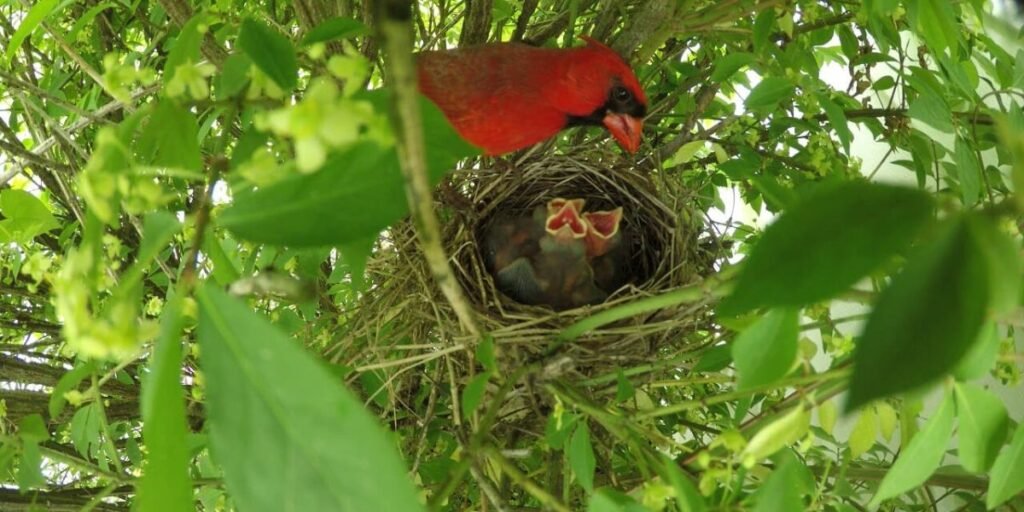
Usually found in densely forested areas, northern cardinals lay their eggs and then eat insects. A few weeks before they build their nests, the male and female birds look for places to nest. They like short branches that are no more than 15 feet above the ground in dense vegetation.
Female northern cardinals usually lay two to five eggs, each measuring between 0.7 and 0.8 inches in width and 0.9 to 1.1 inches in length. The eggs hatch after 11–13 days of nesting, which lasts for 7–13 days. The eggs appear buffy, greyish, or greenish-white throughout incubation, with hints of light grey to brown.
Orioles from Baltimore
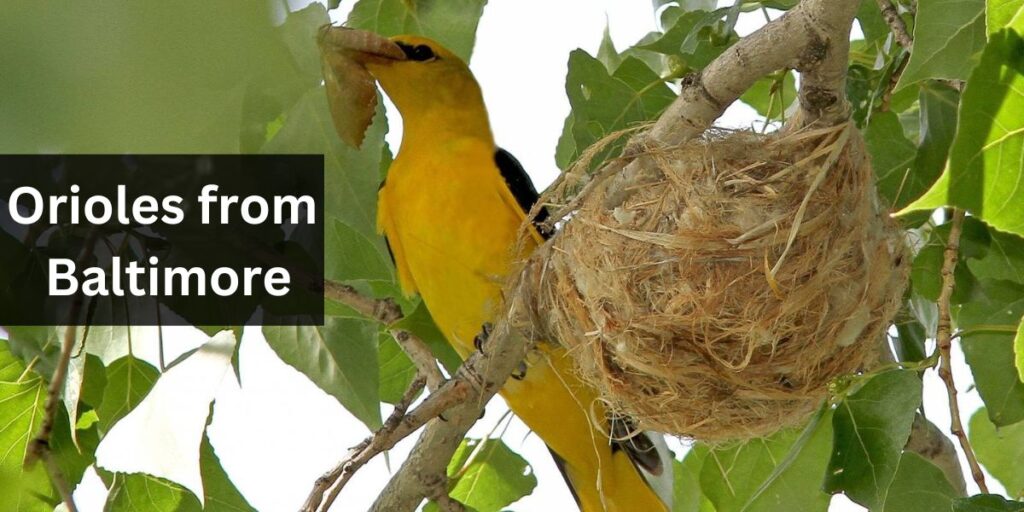
The Baltimore oriole prefers open areas over dense forests. The female must locate a slender tree branch on which to construct their nest. With their woven, protruding bottom hanging nests, Baltimore orioles’ nests measure 3″–4″ deep, 3”–4” across, and 2”–3 wide.
This type of bird typically produces clutches of three to seven eggs, each measuring 0.8 to 1.0 inches in length and 0.6 to 0.7 inches in breadth. The 11–14-day period is the same for both nesting and incubation. The eggs are speckled with lavender, black, or brown and are either light grey or bluish-white.
American Goldfinch

Parks, suburbs, and residential areas with natural food supplies are common places to observe American goldfinch populations. The adult birds look for areas where they can see their nests from the ground, which are open nesting places. When completed, the nests measure 2-4.5″ in height and 3″ in diameter. They are compact.
Within a nest are two to seven eggs, measuring 0.6 to 0.7 inches in length and 0.5 inches in width. The eggs have little, pale brown dots on a bright blue-white background. The time it takes for a bird to nest is 11–17 days, and the eggs hatch in 12–14 days.
The American Robin
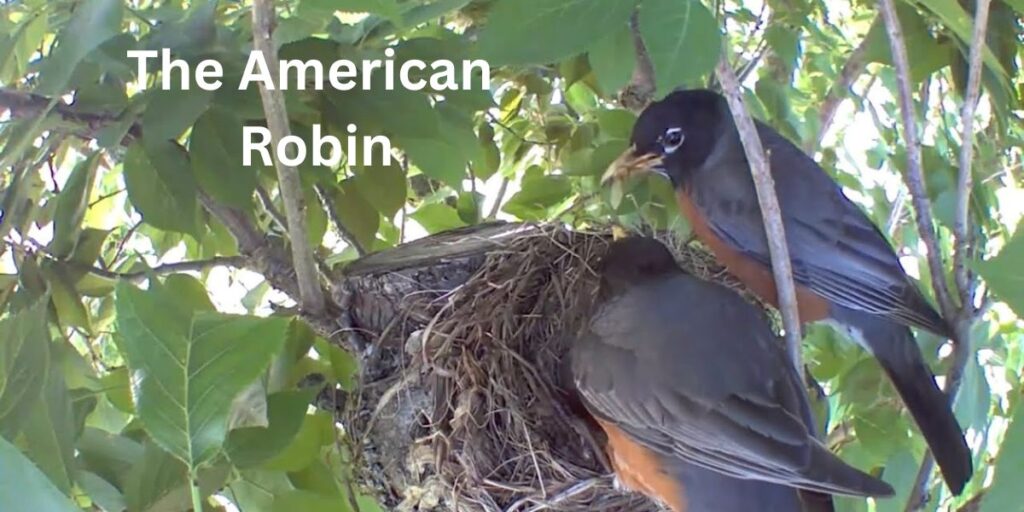
The American robin favors both wide-open areas and untamed environments. The female birds select the parallel, hidden tree branches as their nesting locations. The finished nest measures 6-8″ in diameter and 3-6″ in height.
The eggs laid by female American robins measure 0.8″ in width and 1.1–1.2″ in length. The females can deposit three to five eggs at a time. The eggs are fleck-free and either sky blue or blue-green. The incubation period for bird eggs is 12-14 days, while the nesting period is 13 days.
Carolina Wren

The Carolina wren can frequently be observed in forested regions, bushes in farmlands, and dilapidated buildings. They like to construct their nests between three and six feet above the ground, frequently in exposed tree cavities, as well as in abandoned boxes, flowerpots, and other discarded human debris. The nests of Carolina wrens, both male and female, can be 3 to 9 inches in length and 3 to 6 inches wide.
This type of bird typically lays three to seven pinkish-white or white-cream eggs with rusty-brown flecks. The Carolina wren has a 10–16 day nesting period and a 12–16 day incubation period.
Downy Woodpecker

The Downy Woodpecker’s natural habitat includes open forests, streams, groves, and suburbs. They like to construct their nests in dead trees, trees afflicted with fungi, or dead sections of living trees. A week or three is needed for the construction of the nest, which is then finished to measure 6–12″ deep and 1–1.5 broad.
The 18–21 nesting cycle produces 3–8 eggs, and it takes 12 days for the females to hatch the bird eggs. The eggs measure 0.8″ in length and 0.6″ in width. They are completely white.
Chickadee with a Black Cap
The black-capped chickadee chooses to construct its nests in fresh or abandoned tree holes as well as specially designed nest boxes. Usually, there are one to thirteen white eggs with reddish-brown specks on them. The incubation period is 12–13 days, and the nesting period is 12–16 days. The eggs of the black-capped chickadee have dimensions of 0.6″ x 0.5″.
Eastern Bluebird
Nest boxes, artificial nesting places, and natural cavities are preferred by Eastern Bluebirds. While the females construct the nests, the males transport the materials for the nests. Two to seven pale blue eggs are produced throughout the 17–21-day nesting cycle. Incubation lasts 11–19 days on average, and the dimensions of the egg are 0.6–0.8 in width and 0.7–0.9 in length.
Chipping Sparrow
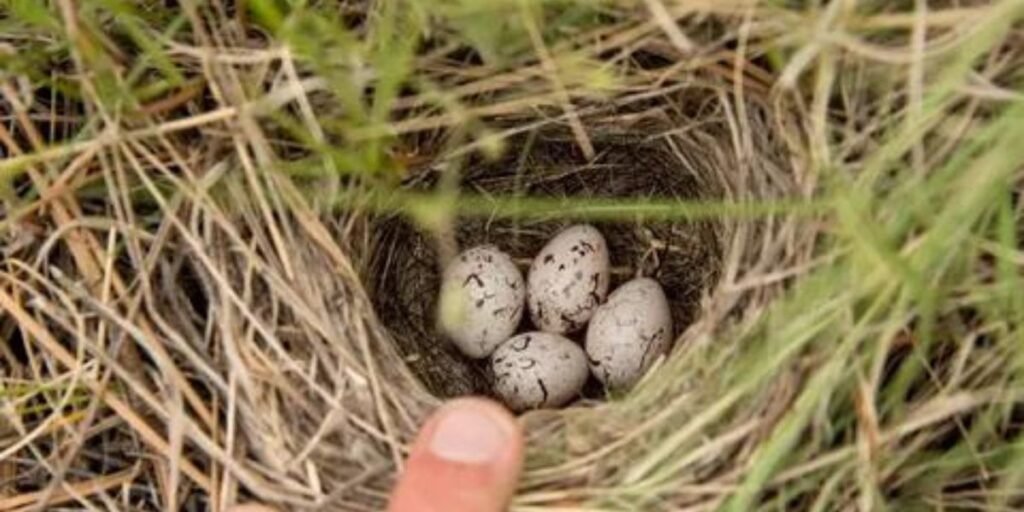
Nests constructed by chipping sparrows range in height from 3 to 10 feet. While the males work to protect their nests, the females arrange them. When finished, the female builds a nest that is 2.2″ deep and 4.5″ wide, in which she lays two to seven eggs. The eggs are 0.6-0.8″ in length and 0.4-0.6″ in breadth.
This type of bird nests for nine to twelve days, followed by ten to fifteen days of incubation. Eggs are either pale white with black, brown, or purple flecks, or they are light blue.
Further FAQs about Bird Egg Hatching
Do birds always perch on their eggs?
Certain birds spend hours, or even days, sitting on their eggs. Some birds simply leave the eggs alone for the remainder of the day after covering their flocks for 30 minutes each day.
For what duration does a bird spend a day on its egg?
To keep the eggs warm and aid in the development of the babies inside, birds must perch on them. However, the size of the bird and its eggs also determines how long they must spend doing this every day.
Little birds, like wrens, would only need 10 to 20 minutes of “sitting time” each day, for instance. On the other hand, the albatross would need to spend weeks at a time sitting on its eggs.
Why do certain birds leave their nests full of eggs behind?
If you come into a nest of bird eggs without a parent, don’t freak out. Most of the time, the parents did not desert their “kids.” When the eggs are viable for incubation, the mature birds will return.
In actuality, the parent birds typically depart the nest to get ready for the eventual “arrival” of the young. During their absence, they could store food, strengthen the nests, and even ward off intruders.
How long can bird eggs last without being heated?
Although they may endure up to seven days in the absence of heat, bird eggs need a constant temperature of 16 to 17 degrees Celsius to survive.
Can an egg from a bird hatch without its mother?
Because the egg contains everything a youngster needs to mature, birds can hatch even in the absence of the mother.
Father birds are used by many bird species to sit on the eggs during the incubation period until the final egg is laid.
Do birds have winter hatching seasons?
You’ll be shocked to learn how common it is for birds to lay eggs in the cold. Although they don’t always have to be winter birds, owls, eagles, and hawks, for example, start their nests early (typically in the winter) and rear their young for a much longer period than other bird species.
Conclusions: What is the average hatching time for bird eggs?
It’s not necessary to be an expert birdwatcher to find the nesting cycle of a bird to be incredibly fascinating to see.
Finding out how long it usually takes for bird eggs to hatch, the specifics of the incubation period, and how birds feed their young can be useful if you’ve ever had a backyard bird with a nest full of eggs. Learning the facts helps you to avoid unwarranted fear if you believe the mother bird has left the nest or that the eggs are taking an excessively lengthy time to hatch.

